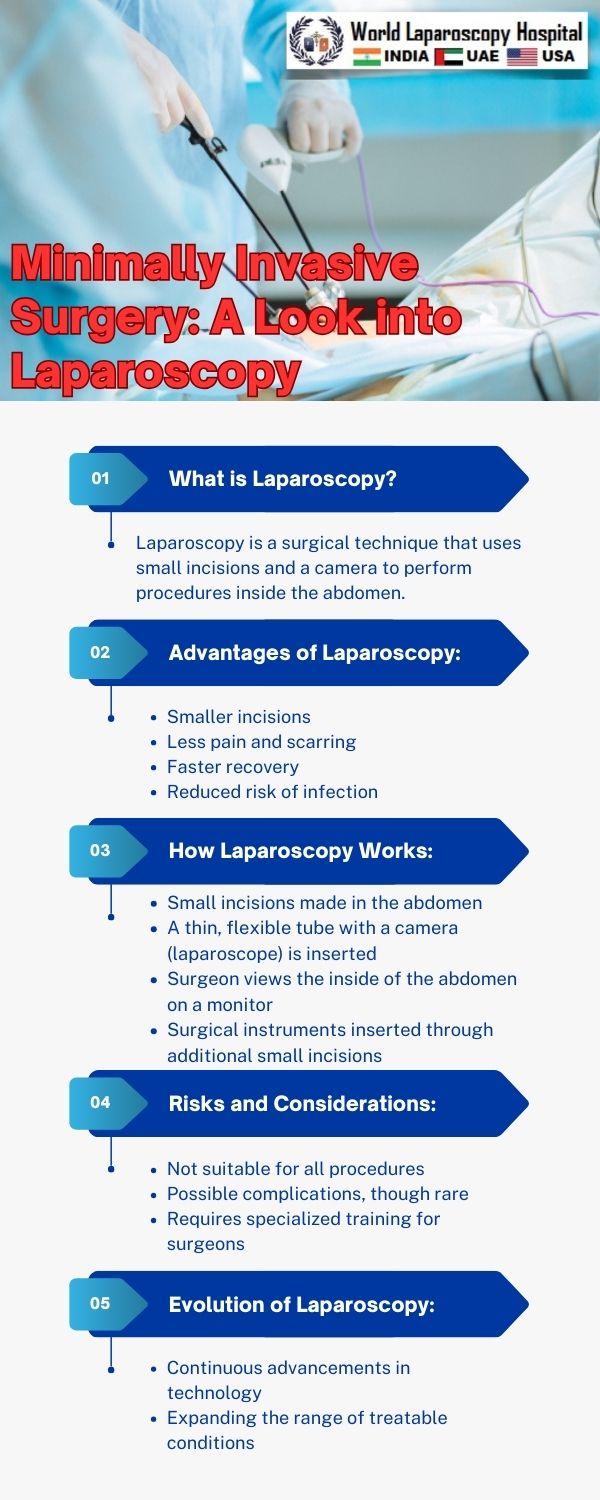Minimally Invasive Surgery: A Look into Laparoscopy
Introduction
In the ever-evolving field of surgery, innovation has led to safer and more effective procedures. One such innovation that has revolutionized the world of surgery is laparoscopy, a minimally invasive surgical technique. Surgeons in Gurugram and around the world have embraced this approach for its numerous benefits. In this article, we will take an in-depth look at laparoscopy, its history, applications, advantages, and why it has become a preferred choice for many surgical procedures.

The Evolution of Surgery
Surgery has come a long way since its inception. In ancient times, surgical procedures were often painful, invasive, and carried a significant risk of complications. However, as medical knowledge and technology advanced, so did the field of surgery. The advent of anesthesia, aseptic techniques, and surgical instruments transformed surgery into a more precise and less painful endeavor.
The Birth of Minimally Invasive Surgery
The concept of minimally invasive surgery emerged in the 20th century. Surgeons began to explore ways to reduce the trauma caused by traditional open surgeries. This quest for less invasive approaches led to the development of laparoscopy, a technique that involves making small incisions and using specialized instruments to perform surgical procedures.
Laparoscopy Unveiled
Laparoscopy is a surgical technique that involves the use of a laparoscope, a thin, long tube with a high-resolution camera attached to one end. Surgeons insert the laparoscope through small incisions in the patient's body, allowing them to visualize the internal organs on a screen. This real-time imaging provides a clear view of the surgical site, enabling precise and controlled maneuvers.
The Versatility of Laparoscopy
Laparoscopy has found applications in various medical specialties, including gynecology, urology, gastroenterology, and more. Some of the common procedures performed using laparoscopy include cholecystectomy (gallbladder removal), appendectomy, hernia repair, and hysterectomy. Its versatility stems from the ability to adapt the technique to different surgical needs.
Advantages of Laparoscopy
a) Minimal Scarring One of the most significant advantages of laparoscopy is minimal scarring. Traditional open surgeries often leave large, noticeable scars, while laparoscopic incisions are small and result in less visible scars. This cosmetic benefit is particularly appealing to patients.
b). Reduced Pain Due to smaller incisions and less tissue disruption, patients who undergo laparoscopic surgery generally experience less postoperative pain compared to open surgery. This contributes to a quicker recovery and shorter hospital stays.
c) Faster Recovery The minimally invasive nature of laparoscopy allows patients to return to their daily activities sooner. This quicker recovery is especially beneficial for individuals with busy lives and responsibilities.
d) Lower Risk of Infections Smaller incisions and reduced exposure of internal organs decrease the risk of surgical site infections. This is a crucial advantage in maintaining patient safety.
Challenges and Limitations
While laparoscopy offers numerous advantages, it is not without its challenges and limitations. These include a steep learning curve for surgeons, limited access in certain cases, and the need for specialized equipment. Additionally, not all surgical procedures are suitable for laparoscopic techniques.
The Future of Laparoscopy
As technology continues to advance, so does the potential of laparoscopy. Robotic-assisted laparoscopy and other innovations are pushing the boundaries of what can be achieved through minimally invasive surgery. The future holds the promise of even more refined and precise procedures, further enhancing patient outcomes.
Conclusion
Laparoscopy has undeniably transformed the world of surgery. Surgeons in Gurugram and beyond have embraced this minimally invasive technique for its numerous benefits, including reduced scarring, less pain, faster recovery, and lower infection risk. While challenges and limitations exist, ongoing advancements in technology and surgical techniques ensure that laparoscopy will continue to play a significant role in the field of surgery. As we look ahead, we can only anticipate further breakthroughs and improvements, ultimately benefiting patients and advancing the art of surgery.
| Older Post | Home | Newer Post |

